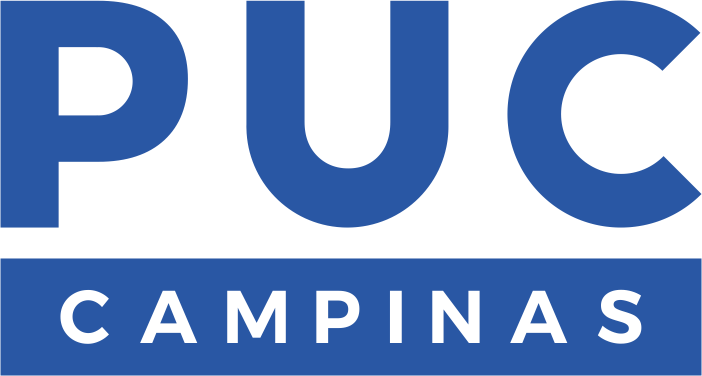| dc.contributor.advisor | Merhi, Vânia Aparecida Leandro | |
| dc.contributor.author | Camargo, Daniella Nunes | |
| dc.date.accessioned | 2025-03-13T19:21:53Z | |
| dc.date.available | 2025-03-13T19:21:53Z | |
| dc.date.issued | 2024-12-03 | |
| dc.identifier.uri | http://repositorio.sis.puc-campinas.edu.br/xmlui/handle/123456789/17584 | |
| dc.description.abstract | Introdução: A mandíbula é o único osso móvel da face e participa de funções básicas
fonoarticulatórias, como mastigação, fonação, deglutição e manutenção da oclusão
dentária. As fraturas mandibulares podem levar a deformidades que, quando não
identificadas ou não tratadas de forma adequada, podem culminar em sequelas graves,
tanto estéticas quanto funcionais. A terapia de reabilitação baseada em uma abordagem
miofuncional orofacial é importante como tratamento complementar nos traumas de face,
pois permite o restabelecimento das funções orofaciais e, com isso, diminui o risco de
hipomobilidade, redução funcional e progressão de possíveis sequelas. Objetivo: Analisar
comparativamente o benefício da reabilitação pós-operatória de fratura de mandíbula em
indivíduos submetidos ou não à terapia muscular complementar. Métodos: Estudo
longitudinal e retrospectivo com 40 pacientes do serviço de Cirurgia Plástica da Pontifícia
Universidade Católica de Campinas que foram submetidos à cirurgia de correção de fratura
de mandíbula entre os anos de 2007 e 2021, comparando grupos que receberam ou não
terapia muscular complementar pós-operatória. Resultados: Constatou-se uma
predominância do gênero masculino na proporção 3:1, média de idade de 27 (31 ± 14.74)
anos no momento do trauma, etiologia mais comum agressão (45%), região anatômica
mandibular mais acometida ângulo/ramo (57,5%) e o envolvimento de múltiplas fraturas
(60%). Do total, 45% dos pacientes fizeram terapia de reabilitação muscular pósoperatória. O tempo médio de recuperação foi de dois meses. Comparando os grupos que
fizeram ou não terapia muscular, houve diferença significativa com relação ao tempo de
recuperação, aos itens do QoR-15 e ao escore final do QoR-15. Pela análise regressiva
simples e múltipla de Poisson, verificou-se que a terapia de reabilitação muscular foi
significante para explicar o tempo de recuperação dos pacientes (PE=0.5128; EP=0.2284;
p=0.0248). Conclusão: Observou-se benefício na realização de terapia de reabilitação
muscular no período pós-operatório de pacientes submetidos a cirurgia de reconstrução
mandibular após fratura traumática. A recuperação mais rápida de uma população
economicamente ativa reflete em menos custos sociais hospitalares e no que tange a
afastamento laboral. | pt_BR |
| dc.description.abstract | Introduction: The mandible is the only movable bone of the face and participates in basic
phonoarticulatory functions such as chewing, phonation, swallowing and maintenance of
dental occlusion. Mandibular fractures can lead to deformities that, when not identified or
not treated appropriately, can result in serious aesthetic and functional consequences.
Rehabilitation therapy based on an orofacial myofunctional approach is important as a
complementary treatment for facial trauma, as it allows the restoration of orofacial functions
and, therefore, reduces the risk of hypomobility, functional reduction and progression of
possible sequelae. Objective: This study aimed to comparatively analyze postoperative
rehabilitation in jaw fractures in individuals undergoing or not undergoing complementary
muscular therapy. Methods: Longitudinal and retrospective study of 40 patients from the
Plastic Surgery service of the Pontifical Catholic University of Campinas who underwent
jaw fracture correction surgery, between the years 2007 and 2021, comparing groups that
received or did not receive post-operative complementary muscle therapy. Results: There
was a predominance of males in the proportion 3:1, average age of 27 (31 ± 14.74) years
at the time of trauma, most common etiology aggression (45%), mandibular anatomical
region most affected angle/ramus (57.5%) involving multiple fractures (60%). Of the total,
45% patients underwent postoperative muscle rehabilitation therapy. The average recovery
time was 2 months. Comparing the groups that did or did not undergo muscle therapy, there
was a significant difference in recovery time, QoR-15 items and the final QoR-15 score.
Using simple and multiple Poisson regression analysis, it was found that muscular
rehabilitation therapy was significant in explaining recovery time (PE=0.5128; EP=0.2284;
p=0.0248). Conclusion: There is benefit in carrying out muscular rehabilitation therapy in
the postoperative period of patients undergoing mandibular reconstruction surgery after a
traumatic fracture. The faster recovery of an economically active population is reflected in
fewer hospital social costs and in terms of time off work. | pt_BR |
| dc.description.sponsorship | Coordenação de Aperfeiçoamento de Pessoal de Nível Superior (CAPES) | pt_BR |
| dc.language.iso | por | pt_BR |
| dc.publisher | Pontifícia Universidade Católica de Campinas (PUC-Campinas) | pt_BR |
| dc.rights | Acesso aberto | pt_BR |
| dc.subject | Fratura de mandíbula | pt_BR |
| dc.subject | Reabilitação muscular pós-operatória | pt_BR |
| dc.subject | Terapia miofacial | pt_BR |
| dc.subject | Jaw fracture | pt_BR |
| dc.subject | Postoperative muscle rehabilitation | pt_BR |
| dc.subject | Myofacial therapy | pt_BR |
| dc.title | Análise comparativa pós-operatória de fratura de mandíbula: fazer ou não terapia muscular | pt_BR |
| dc.type | Dissertação de mestrado | pt_BR |
| dc.contributor.institution | Pontifícia Universidade Católica de Campinas (PUC-Campinas) | pt_BR |
| dc.description.sponsorshipId | 001 | pt_BR |
| dc.identifier.lattes | 0699110239873714 | pt_BR |
| puc.advisorLattes | 8432155451042794 | pt_BR |
| puc.advisorLattes | 1833453392773484 | pt_BR |
| puc.referee | Tedrus, Gloria Maria de Almeida Souza | |
| puc.referee | Andreollo, Nelson Adami | |
| puc.refereeLattes | 6419385508557772 | pt_BR |
| puc.refereeLattes | 6300296790217820 | pt_BR |
| puc.center | Escola de Ciências da Vida | pt_BR |
| puc.graduateProgram | Ciências da Saúde | pt_BR |
| puc.embargo | Online | pt_BR |
| puc.undergraduateProgram | Não se aplica | pt_BR |
| puc.contributor.co-advisor | Aquino, Jose Luis Braga de | |
